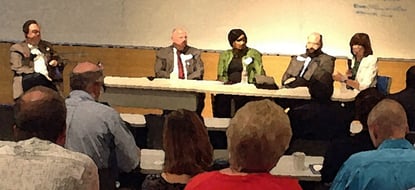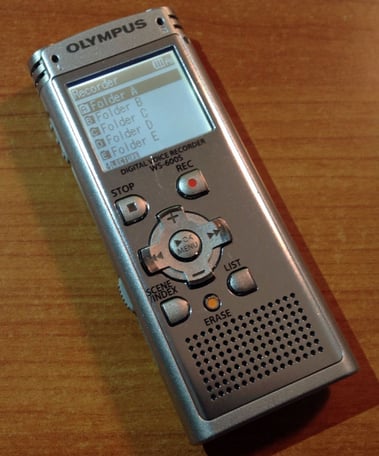I was getting ready to present Taking the NO Out of InNOvation for a client’s all-team dinner event. My client contact was wonderful in supplying lots of information on the organization and its people. Additionally, we had already conducted a survey among the next day's workshop participants on creativity, innovation, and strategic thinking readiness.
Yet for all that prep, there's nothing like seeing the organization in person - both its people and its physical location place - to shape last minute thinking about specifically tailoring a presentation in the last hours before you deliver it.
In fact, having lunch and talking over the course of the afternoon with my client contact was very productive in identifying several last-minute tweaks to make the Taking the NO Out of InNOvation presentation closely fit the audiences' needs. The changes, which included changing the order of content I’d delivered in the same order for years, also made delivering Taking the NO Out of InNOvation a very fresh experience for me.
At one point, I told our client how much I appreciated that she wasn't freaking out. She was sitting through me creating completely new slides and moving things around on a presentation that nearly her whole company was going to see in two hours. She said she couldn't imagine making these types of last minute changes and still being ready to talk about things in a different order than originally planned. Yet she told me all the references they checked told her I had very effective presentation skills and could basically handle whatever was thrown my way and could customize a session to exactly what they'd want.
6 Keys to the Effective Presentation Skills for Making Last-Minute Changes
Suppose you need to make last-minute changes to a presentation. Maybe you won’t ever want to make the kind of changes I was doing, but these six keys will be valuable nonetheless.
1. Think of your presentation as modules.
Consider your presentation as if it were a series of independent pieces of content. Instead of trying to memorize all your content strung together in order, know each module of content (perhaps a few slides or one section) on its own, not in relation to what's before or after it.
2. When using slides, take advantage of animation to deliver cues.
If you're using slides in a PowerPoint or Keynote presentation, take advantage of animation to tip you off to what is next. Only reveal part of a slide when you first click on it. This gives you an idea as to what to start talking about when the slide comes up. Then as you start talking, you can reveal the rest of the information on the slide.
3. Leave space in the presentation to interact.
If you pre-plan times when you’ll ask the audience questions and take advantage of other ways to directly interact, it will reduce your dependence on specific slides and talking points.
4. Develop multiple ways into and out of important pieces of content.
If you have a couple of different ways to launch into and exit important content modules, you will be able to improvise more readily. Through imagining various potential connections between specific sets of slides and the rest of the presentation, you set yourself up for tremendous flexibility.
5. Use slide cues to let you know what's coming.
When changing things late in the game, it's challenging to know in exactly what order every slide is and where all the key transitions are. In this situation, you can use subtle visual cues on slides. For instance, I’ll often hide The Brainzooming Group logo on a slide at the end of a particular presentation section. When the logo disappears, I know a content section is at its end. You can also use a barely noticeable shape or a different font for closing slides to signal you, but not the audience, that a change is coming.
6. Take advantage of hyperlinks within a presentation.
For several presentations, I allow the audience to select the specific content and the order that's most beneficial for them. To deliver this customization, I use a slide with a menu of topics and hyperlinks to each presentation section. The same slide appears at the end of each section so there's always a natural pause point integrated into each section. This lets me know it’s time for another topic and to give the audience a chance to pick what’s next.
Boosting Your Effective Presentation Skills
Again, maybe you’re not going to join me in doing this level of last-minute presentation customization. But even if you are often in a situation of having to make a few tweaks late in the game, these tips will definitely make them work better for you! – Mike Brown





